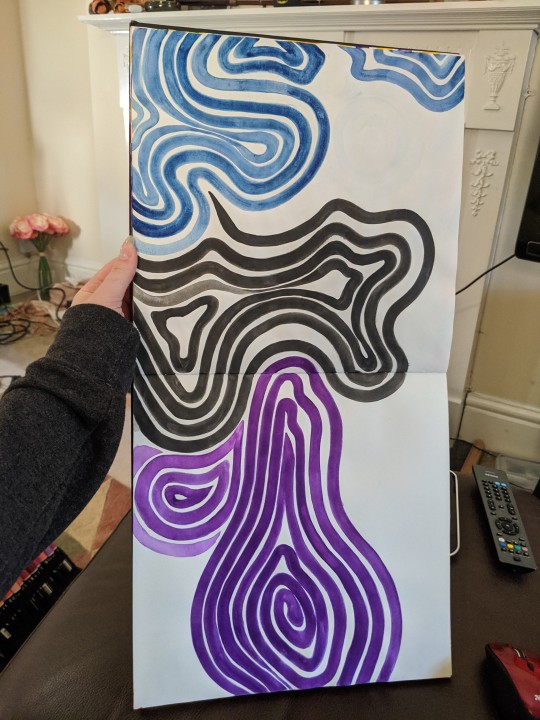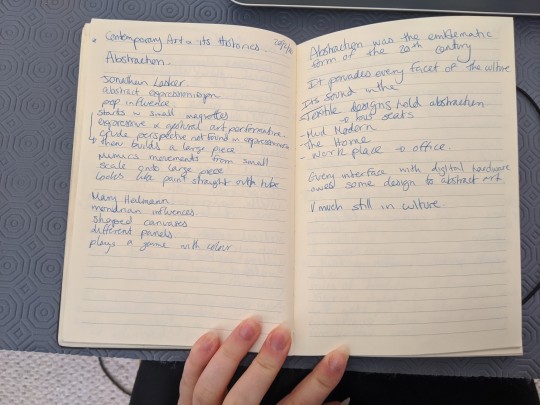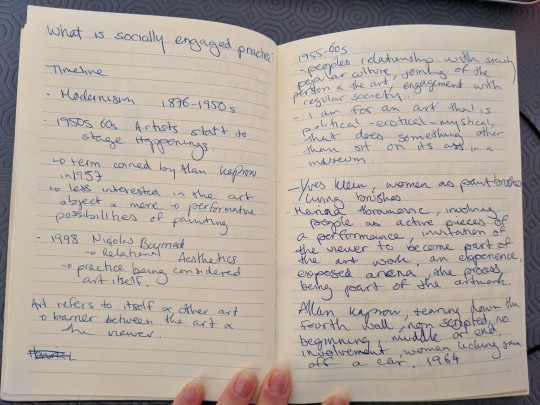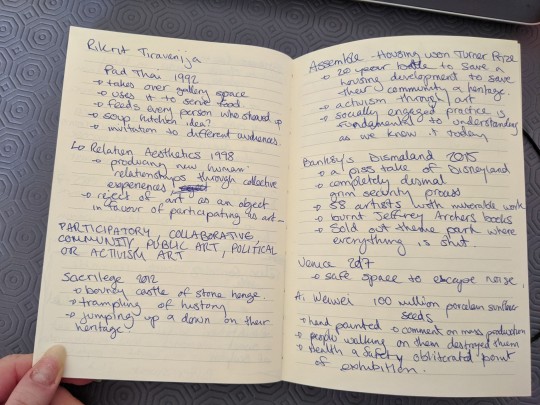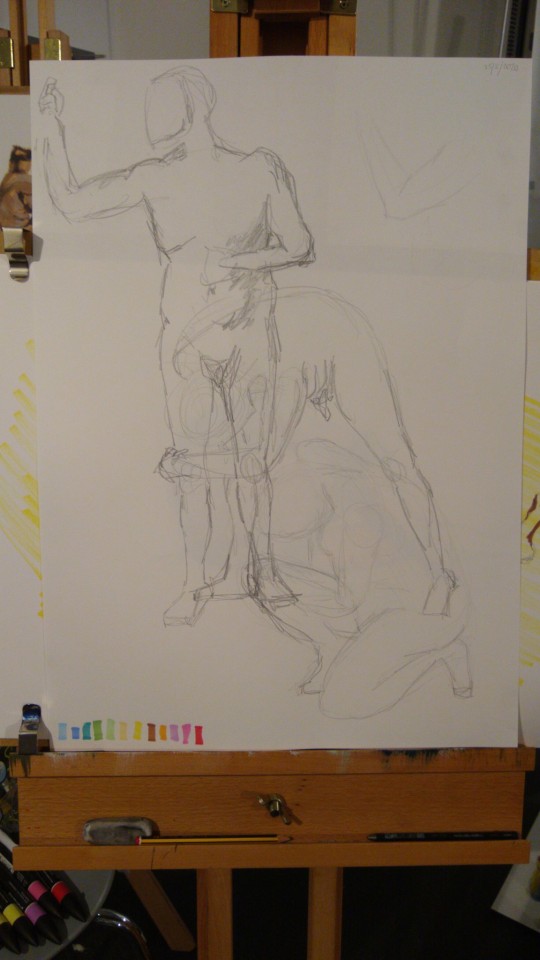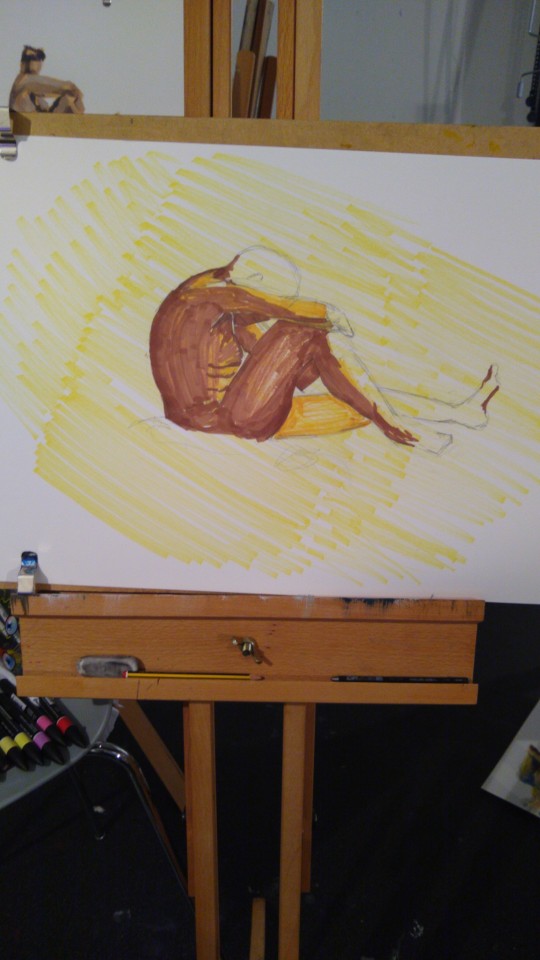Text


A list of all the workshops I have attended.
4 notes
·
View notes
Text

A list of ideas that I want to pursue. Whether I do or not will be left up to how this virus continues but I thought I'd leave these here to go back to.
1 note
·
View note
Text
T & P2 Intro to Premier Pro
For this workshop we were instructed to film a short amount of clips to join together and play around with the effects of premier pro.
I struggled with figuring out what I wanted to film for this project but I had this vague idea of attempting to illustrate what the inside of an ADHD brain feels like. I wasn’t sure how I was going to portray it but I thought I would start by writing (or should I say attempting to write as my brain thinks so fast I couldn’t keep up) all the things that popped into my head when I just let my brain wander. This would create a script for me to read and then edit to the speed of my thoughts on premier pro.
The quality of my videos was poor as I got this idea quite last minute. In a way this enabled me to release my need for perfection and let myself go a bit more. I feel positive about where this project could go and where it could take me next year.


I hate myself

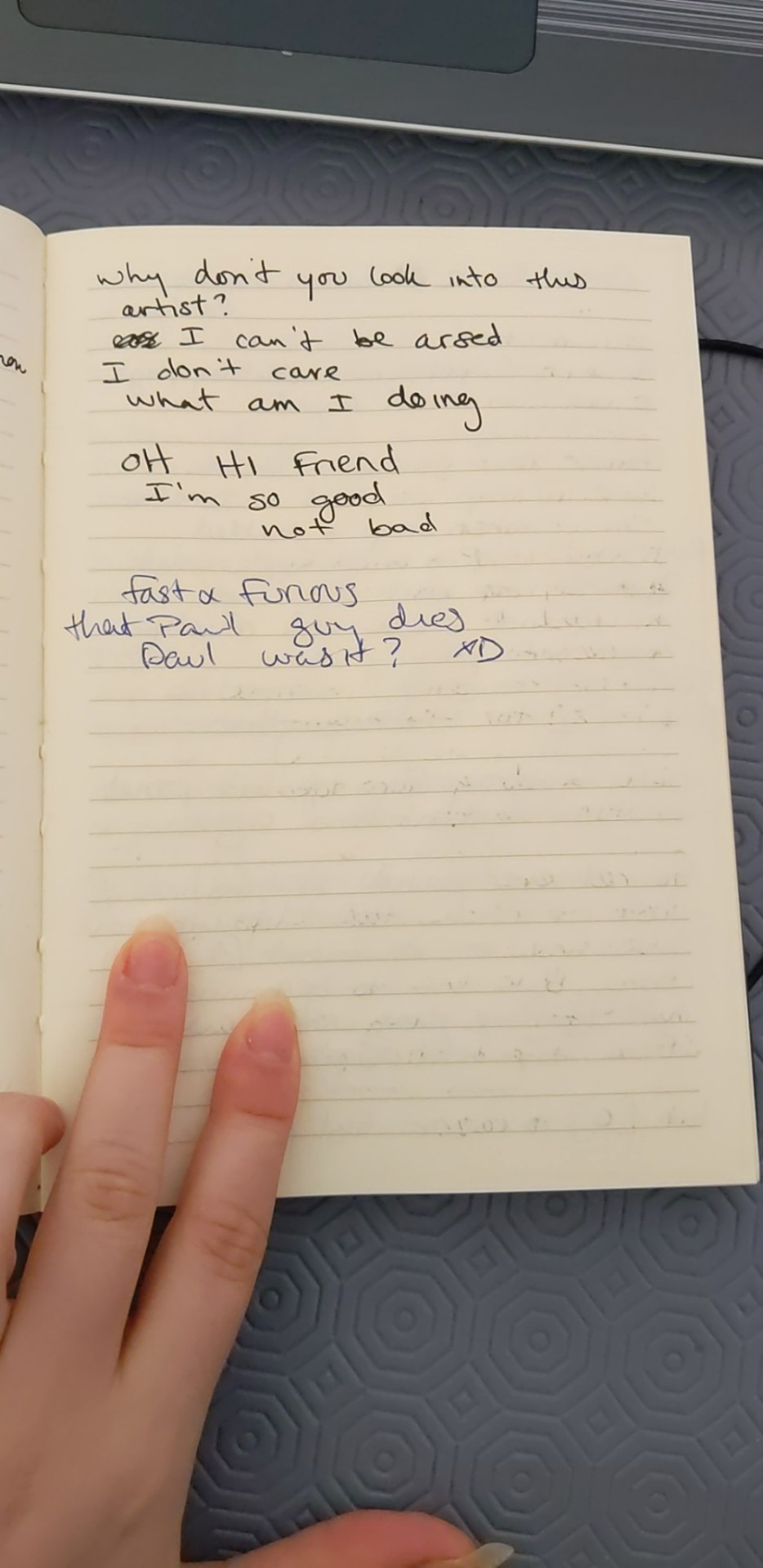
Here is what I came out with after the lesson. I have not made enough time to explore this further before the deadline but will be expanding my premier pro knowledge surrounding effects by continuing with this video.
https://testlivesalfordac-my.sharepoint.com/:f:/r/personal/c_j_smith5_edu_salford_ac_uk/Documents/i%20hate%20myself?csf=1&web=1&e=2fnKkD
3 notes
·
View notes
Text
T&P2 Weaving research




During the workshop Sue introduced us to a range of artists and David Samuel Stern stood out to me as an artist who I would love to take inspiration from in my portraits. He also has a sense for making elegant art and these woven portraits are right up my alley.
“David Samuel Stern is a photographer, artist, and teacher now based in NYC. His work attracts huge audiences in the way he translates a photographs and portraits into tangible objects. Through the variety of work produced by the artist, this interview focuses on his Woven Portraits series.
"Let's go back to the beginning, how did your journey through the arts begin and develop?"
As a child, I drew constantly—airplanes and sometimes animals. I remember visiting art museums with my mother when I was young, but I didn’t think about art much until I took a darkroom-photography course at a local college during a high-school summer break. I had enjoyed photography in a casual way before that, but when I learned how the medium actually worked, and got to know its weird machinery and chemicals and their smells, it seemed special and I began to take art as a whole seriously.
"The role of the darkroom is so important for many photographers at the beginning of the career when they are learning their trade. Could tell us more about your Woven series and your interest in making outside of the darkroom?"
My Woven Portraits series touches upon portraiture quite a bit, as well as the nature of images, particularly their physicality. As I’ve become more familiar with making this kind of photography, the work also increasingly embraces the theme of craft, and I honestly believe the process of making something is as important as the thing itself.
"Totally. Process is so important, when making images that are have more elements than pure photography, the meanings evoked come from the craft that aids the photographs."
Portraiture contains a kind of yearning, whereas weaving and patternmaking in some general way are mechanically indifferent. A central theme—as I’m thinking about it these days anyway—is the harmony or discord between these two things. As a photographer, I want to show the subject in an evocative way that sparks a meaningful human reaction. That’s what all artists want. But as a crafter of objects, I want to be a robot; when I’m cutting and weaving the photographs together, I do not think about how a viewer will react to looking at the piece when it’s complete.
"Is your work political?"
These days, especially here in the States, the way one defines oneself is a political act. And portraiture of course has a history of being used as a political tool. In that sense, the Woven Portraits can be seen as apolitical because, by physically weaving multiple photographs of the same person into a composite artwork, they insist on a more complex definition of their subjects. I want the work go beyond the political realm and into what it means to be portrayed in the first place.
Your work feels very human in its complexity. Do your pieces aim to express the identity of yourself to those depicted?
Not in the sense that I attempts to express something about ethnicity or race, etc. My portraits allow their subjects to become abstracted and more complicated, which I think is more truthful than what single definitions can do. The identity of the sitters probably gets more mysterious from the viewer’s end, but I hope that this begs the question how much did we ever really know about the person pictured in a portrait by looking at that very portrait? What does looking at any kind of image ever really get us? When we look at images, I don’t think seeing the thing we’re looking at is where the truth is.
I love that. Thank you."
This final paragraph captured an aspect that I want to explore further. Those final questions regarding what we are actually looking at in a photo struck a chord with me and I have begun to rethink all of my photography to try and answer these questions for my work. With the body paint, I can completely remove the personality of a person on the outside. I can cover up tattoos, I can pose the model in a way that they would not have expected and I can remove their heads in the editing process to completely remove the portraiture element. Which means in my photos, we know absolutely nothing about the person and I have the choice of what I want to portray and if I want to include any of the person. Maybe this means my work is not portraiture. This abstract route is one I am far more interested in and removes a lot of rules that I struggle to shed.
“What does looking at any kind of image ever really get us?” To me, art brings thoughts and/ or emotion. Looking at photos predominantly brings me joy as my memory is poor and it helps me to remember things -- which in itself brings me joy regardless of the contents of the photo.
Sources:
https://www.beyondphotography.online/interviewed-david-samuel-stern
1 note
·
View note
Text
T&P2 Illustrator

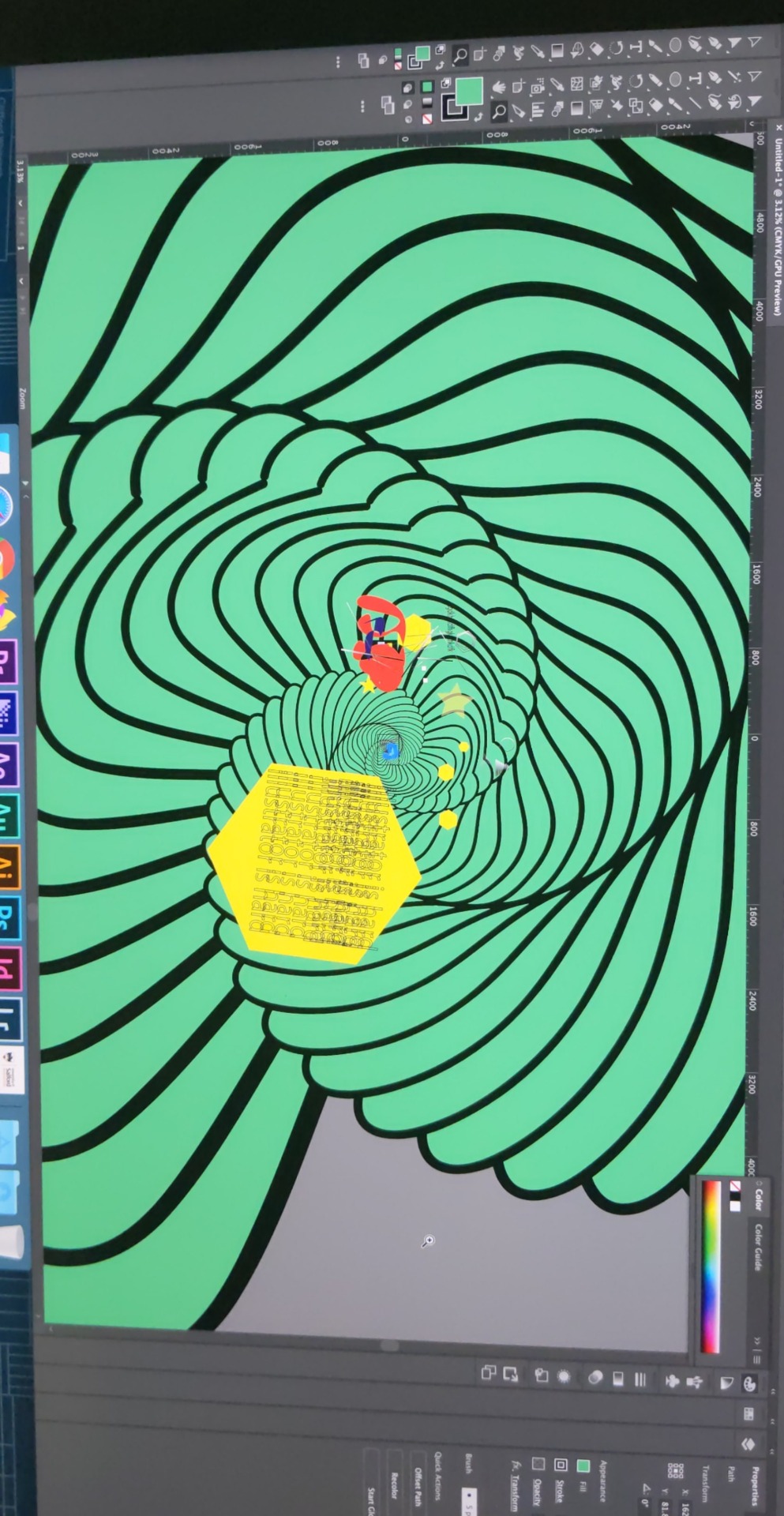

The illustrator workshop was a complete write off for me. I was confused from the start to the end of this session as I just could not get my head to understand the software. I have since tried to watch tutorials on Youtube and am finding the software extremely difficult so I have decided to push the research further when I have the time to really sit down and apply myself to Illustrator.
Because I don’t have a good understanding of what the software can do I have attached a link to multiple tutorials that I can look at when my brain is functioning properly while not under stress.
https://www.digitalartsonline.co.uk/features/illustration/best-adobe-illustrator-tutorials/
0 notes
Text
T & P2 Premier Pro






The premier pro workshop was very confusing to me so I decided to sit down and give myself a week to play and really understand the software. I found multiple videos on youtube and made my own video of my boyfriend and I playing a game in our house. It took about 5 days for me to edit this video together as I kept making silly mistakes that I then had to re-edit over and over again. I had to “story-list” it to be able to navigate through the 5 different clips I was combining as it all got very confusing. I gained so much from this personal lesson and took a lot of notes. I hope to transfer these all into my technical journal when I get it back after quarantine.
Although I learnt a lot about editing clips and adding minor transitions and titles, I didn’t really explore the effects that I could add onto this clip. This is something that I will explore further once the deadlines have been submitted as I am simply too stressed at the moment to do anything creative.
youtube
1 note
·
View note
Text
Primitivism
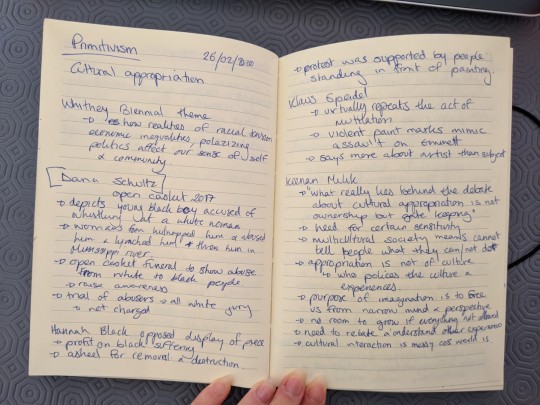


I have noticed that I tend to lose focus/ interest halfway through the contemporary art and its histories lectures. It doesn’t matter how interested in the subject I am I just really struggle with them. I am attaching all my contemporary art and its histories notes so that over the summer I can find them easily and create a timeline for myself so that I understand the history of art better.
0 notes
Text
“In this series of photographs by Carl Warner, human bodies have been contorted, lit, and manipulated to form expansive landscapes reminiscent of barren deserts and mountains. The London-based photographer who might be best known for his Foodscapes, says that he shoots all of the forms in his studio to focus attention on “one person’s body, creating a sense of place so that a body that is lived in becomes a place to live.” The images are then digitally pieced together using Photoshop.”
“As a photographer I find there is nothing more rewarding than going into my studio at the start of the day with an empty canvas and leaving at the end of the day with something wonderful to hang on the wall.” - Carl Warner
“There is a sensual, almost carnal quality, no doubt, to the “bodyscapes.” Warner admits that the desert orgy scene from the film Zabriskie Point was a big inspiration for the series, though, he says, “I don’t consider these images to be about erotica.” Rather, there’s something almost geological about his work, where the folds and wrinkles mirror creases and gnarls in rock and sloping legs conjure images of weathered hills—organic representations of features devoid of life.”
“These images are a different kind of portrait where the bodies we live in are being portrayed as a place we can visit,” says Warner. “I think that there is a sense of spiritual contemplation and peace about looking at ourselves in this way.”
Carl Warner is an artist that I only recently discovered and fits in with my plans to change the way I look at the body. His impatience is something I relate to as I too want to see results quickly when I make work. ADHD causes my brain to hyper-focus on a project and then disengage and become bored of the idea pretty quickly so I would like to look into making more work that is quicker to create. I could also push my photography skills further as I will most likely follow down this route to immortalise my pieces.
Sources:
https://www.thisiscolossal.com/2013/07/carl-warner-bodyscapes/
https://www.smithsonianmag.com/science-nature/carl-warners-mountains-are-made-of-elbows-and-knees-2480439/
http://www.carlwarner.com/


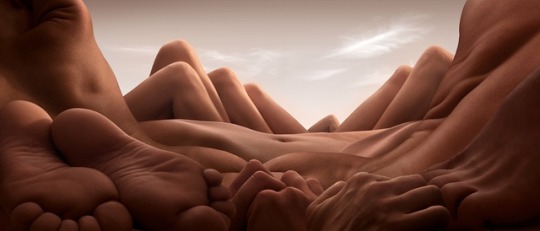
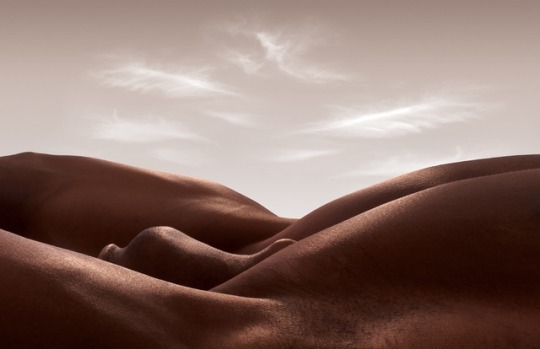

BODYSCAPES. By London-based photographer, Carl Warner.
2K notes
·
View notes
Text
T & P2 Weaving
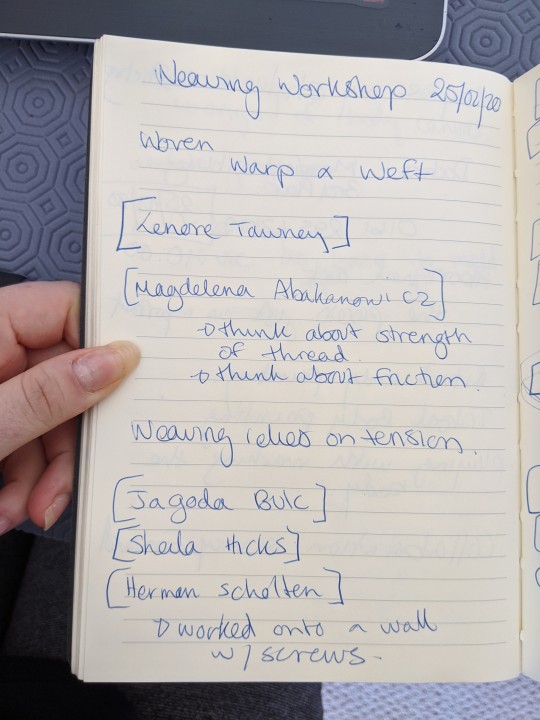
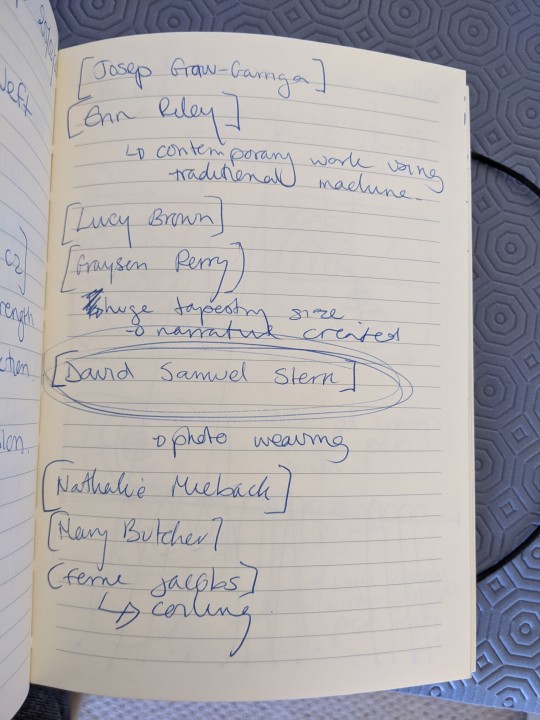

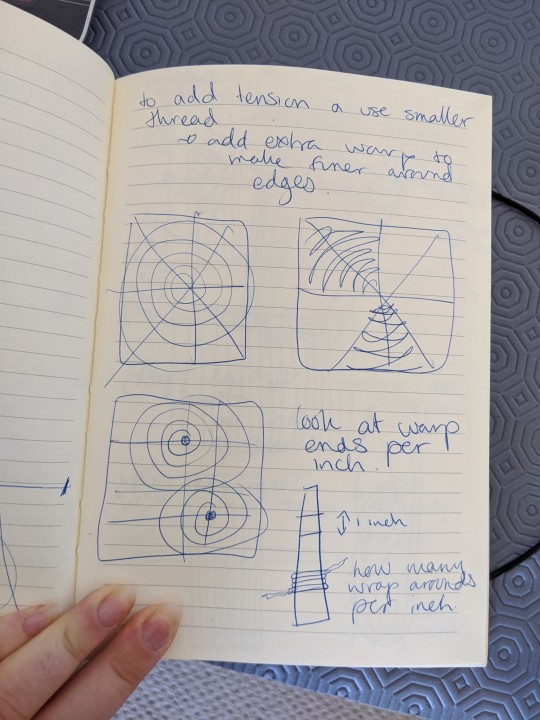



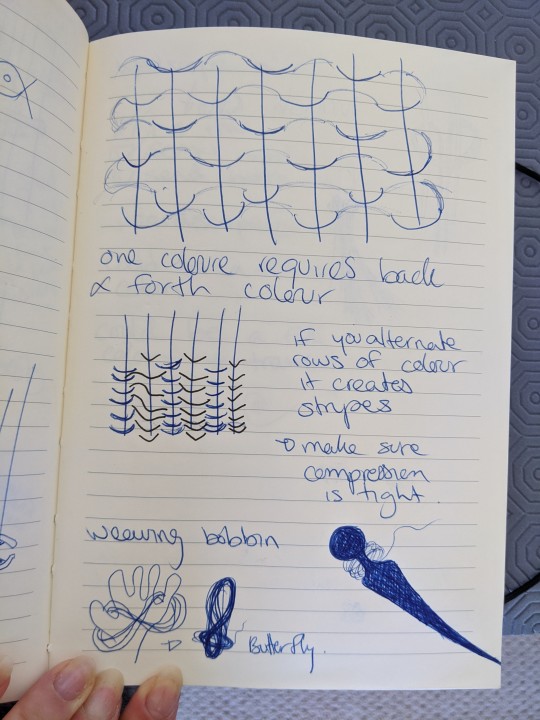

This elective workshop was wonderfully eye opening. These are the notes I would have transferred into my technical journal which I left in the studios. I was especially intrigued by the effect that tension has on the overall shape. I will make a separate post for my research on it.
1 note
·
View note
Text
Yves Klein inspired body painting/printing

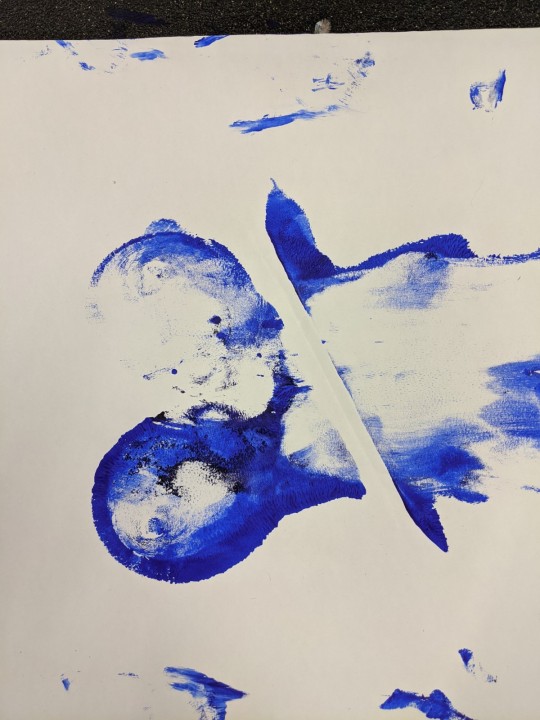


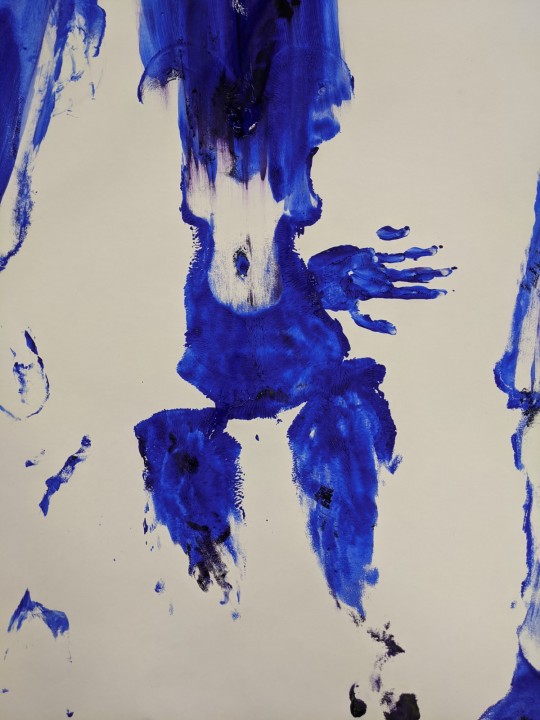
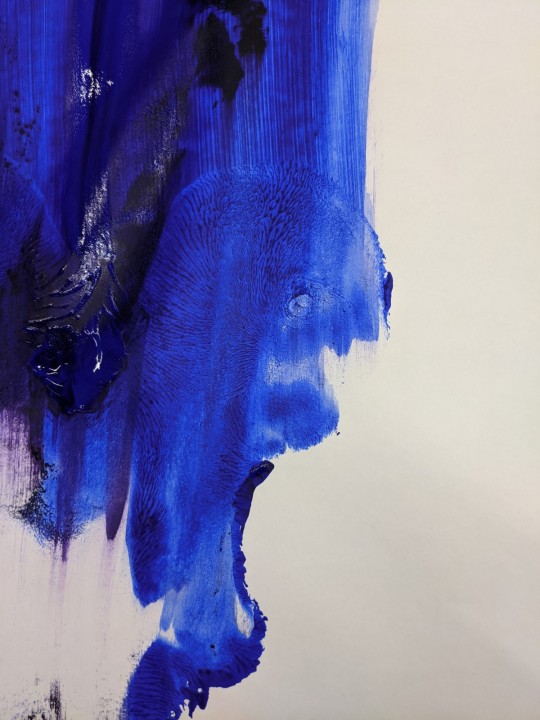
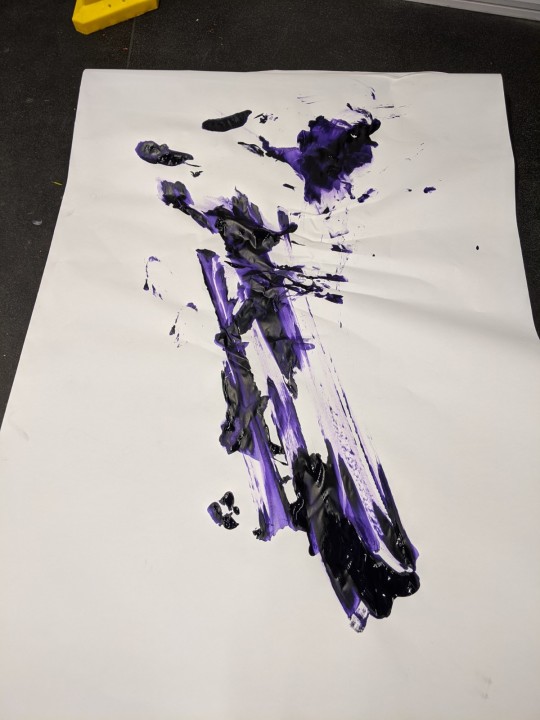
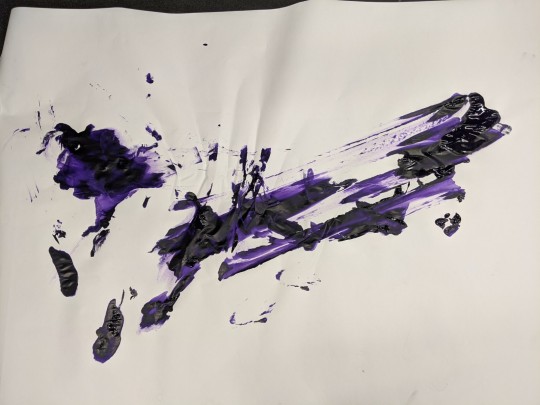
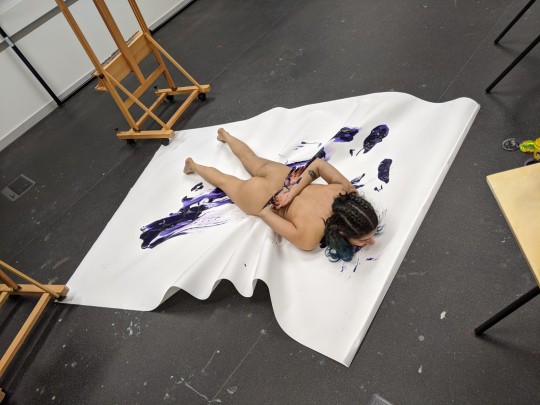
This article is written from a video interview with a couple of Yves Klein’s nude models. For this project Maria had asked me to fill the position of Yves Klein to pull her body over the canvas. I did not have much creative input into it as Maria asked me quite last minute and the whole process was done in a rush but I thoroughly enjoyed pulling Maria’s paint lathered body over the paper. We were definitely not prepared for this which meant we didn’t have the paper effectively secured to the floor; this led to crumpling and sliding of the base sheet which affected the results immensely. It meant we couldn’t be as enthusiastic or strong when pulling her body across it. We also used Acrylic paint instead of Oil as we didn’t do proper research beforehand.
Despite these set backs, this was probably one of the funniest projects we’ve ever worked on and I’ve learnt a lot from it.
The initial inspiration behind these performance pieces that Klein did was photographs of the body shaped burn marks that were left after the atomic explosions in Hiroshima and Nagkasaki. This idea led to the development of “Anthropometrie”, where he created an environment of living paintbrushes using the naked bodies of women to make marks on paper. This project blossomed into a formal event where the French Bourgeoisie were invited to observe the nude models as they printed and pulled their own bodies over the paper while Klein watched and directed from a distance. The prints that we managed to create are abstracted bodies that take on emotion. I completely relate to Rotraut when she states that when looking back at the print of her body, she could see her soul in the paint. Even if our prints weren’t as successful as Klein’s, the movement and the detail that was picked up by the paint were much more interesting than I could ever had imagined. It was like you could see the journey that the body had made to create the print and this made them all the more special to me.
Maria has created a video from the project that I absolutely adore and find a little unsettling (then again, most of Maria’s work is). You can find a link to her creation here as I wanted to have access to the link for further inspiration.
https://youtu.be/S1RHZu2AjJg
Yves Klein’s body imprints, told by Rotraut
"That was very interesting for me, that the body and the soul is one in a print.”
“Naked women as “human paintbrushes” in front of an audience, now considered landmark events in the history of performance art and “the most concentrated expression of vital energy imaginable,” according to the artist behind. In this video, Yves Klein’s widow and collaborator Rotraut shares what it was like to be part of the spectacular events, as a model working with the artist.
“Many people understood and others thought it was just for show.” Rotraut describes how Klein invited the French bourgeoisie to come to his studio and see how he painted. Here they were met by Klein dressed in bow-tie and suit and several nude models, who after painting themselves blue, laid down upon a white canvas and made imprints of their bodies by moving to Klein’s ‘Monotone Symphony’ (a single note played for twenty minutes, followed by twenty minutes of silence), conducted by Klein himself. Rotraut feels that Klein changed the academic way of working with models in response to their frustration of not being able to participate actively. Moreover, by painting yourself blue, she argues, you feel clothed: “There’s no strange ideas or anything. It’s very beautiful and natural… it’s so spiritual and you are in another place when there is a birth of a piece of art.”
Rotraut very much enjoyed doing the body prints with Klein, and when she saw her first print, she felt as if her soul was in the painting: “And that was very interesting for me, that the body and the soul is one in a print.” When Rotraut did the body prints, it wasn’t’ a performance as much as a piece of art, and as it was her great wish to help Klein with his work, it was an incredible moment for her: “For me it was a great honour to be able to be on his side.”
Camera: Rasmus Quistgaard
Edited by: Klaus Elmer
Produced by: Christian Lund
© Louisiana Museum of Modern Art, 2019″
Sources:
http://www.yvesklein.com/en/articles/view/23/yves-klein-s-body-imprints-told-by-rotraut
1 note
·
View note
Text
A studio diary entry
I'm trying to change the way people look at their bodies. And the way society looks at the human body as a whole. I'm making costume like creations with body paint and in a way I'm asking the viewer to look at the body as a canvas instead of as a person and I'm playing with the difference between having the costume reflect the person wearing it and removing the personality from the costume completely. The use of different colours and textures and styles create a more varied and wide ranging plethora of works to invite a wider audience to open up the idea of the human body being beautiful in every shape and size and creation. Like each body being its own work of art.
0 notes
Photo
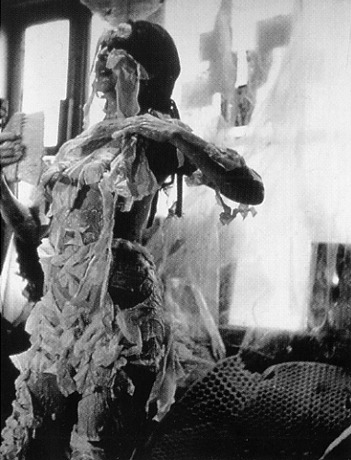
Body Collage - Carolee Schneemann
84 notes
·
View notes
Photo


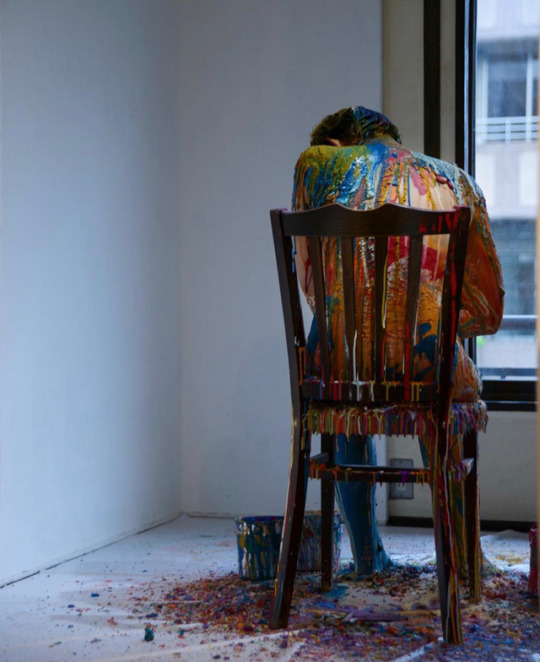
Art school confidential, Shintaku Kanako
304 notes
·
View notes





